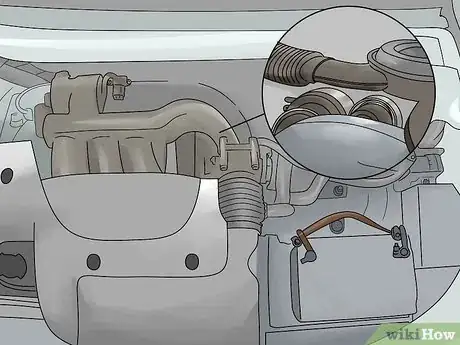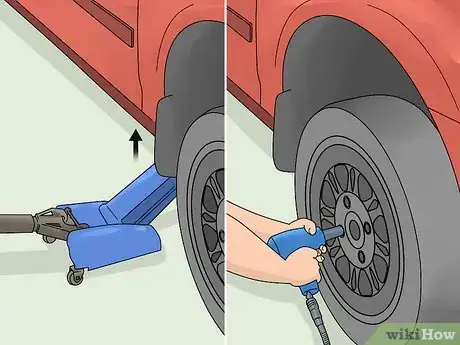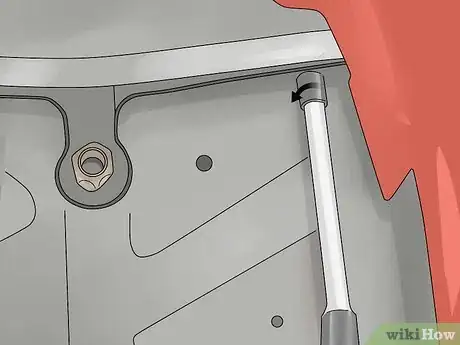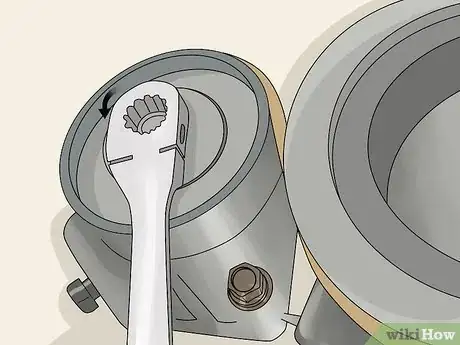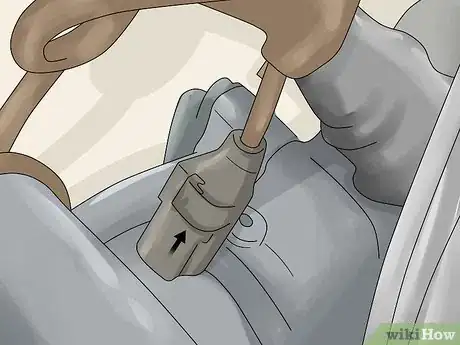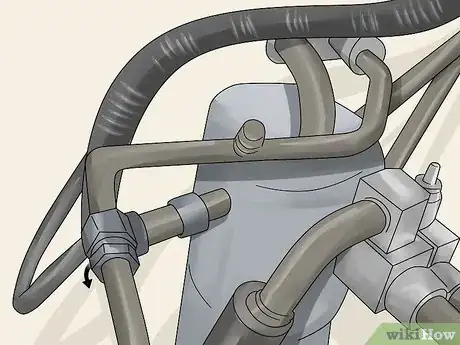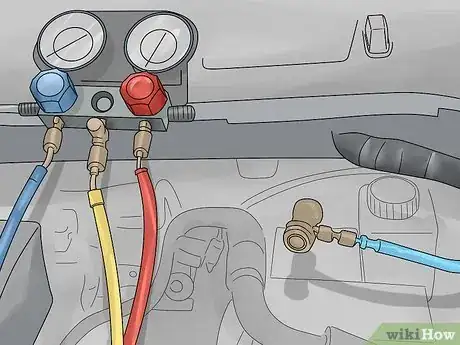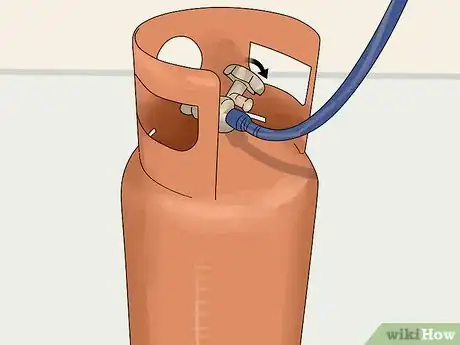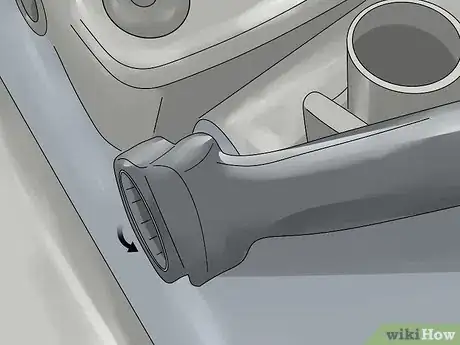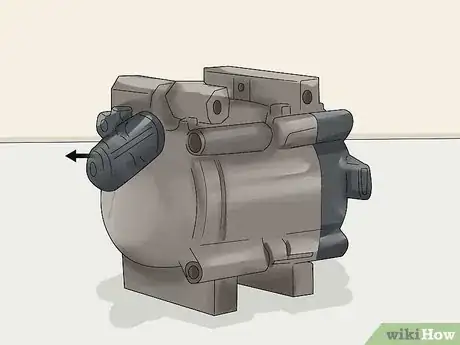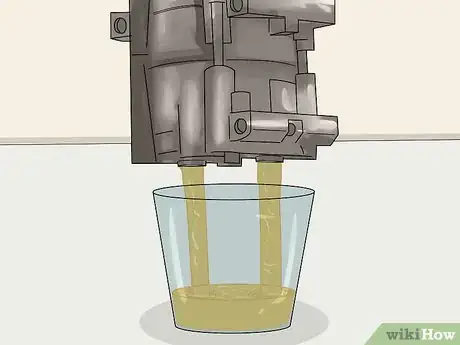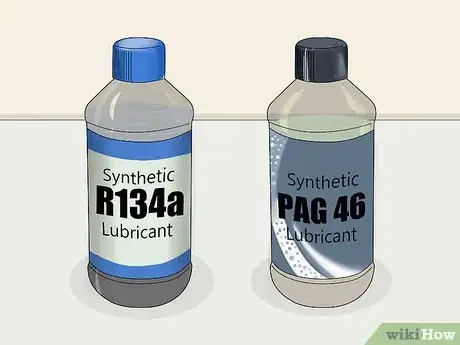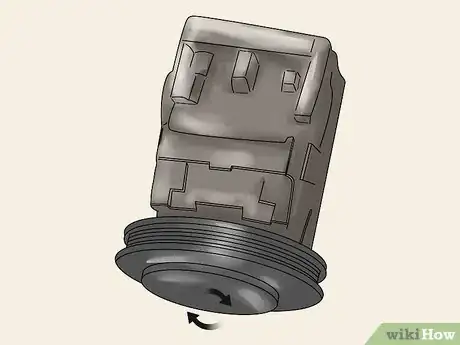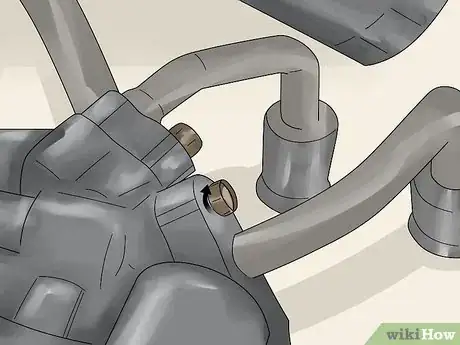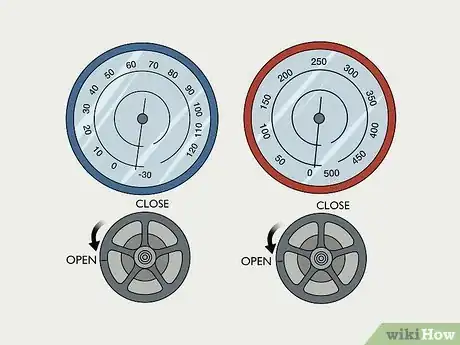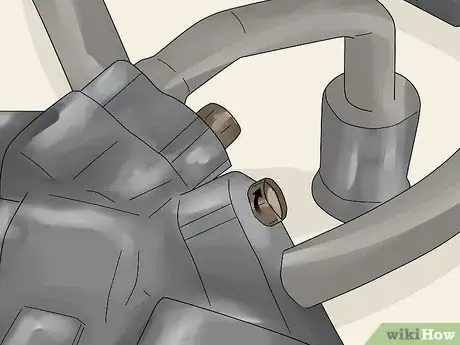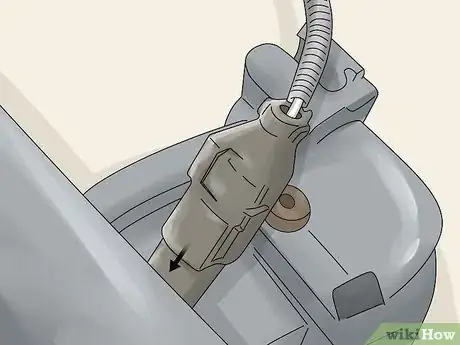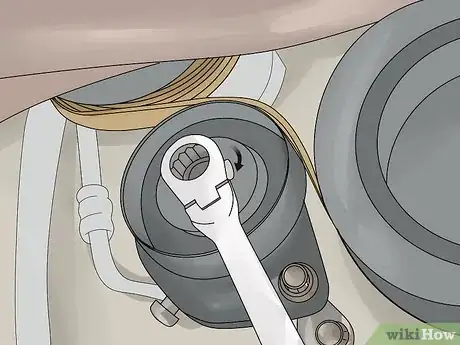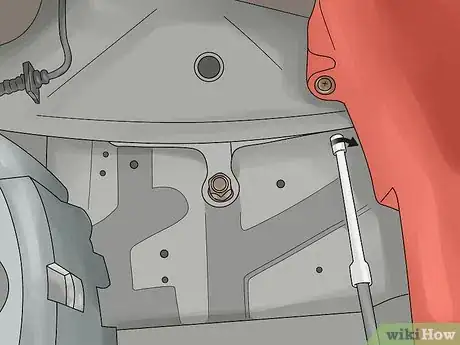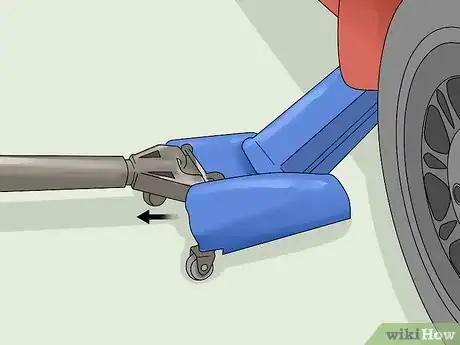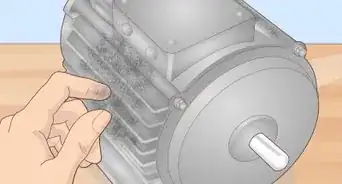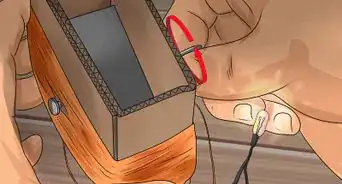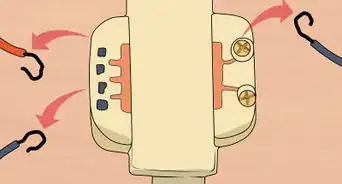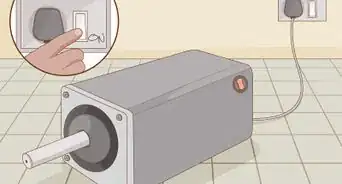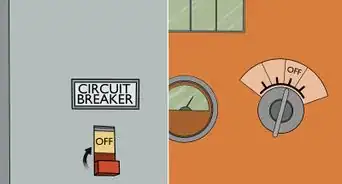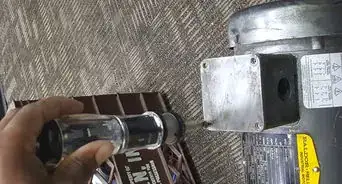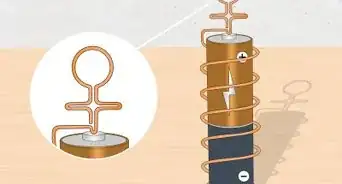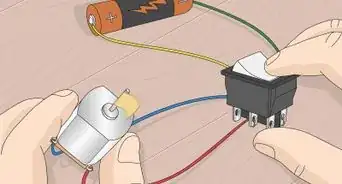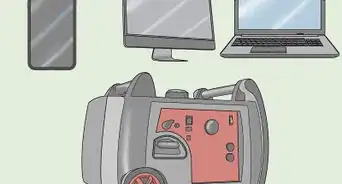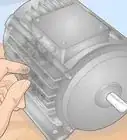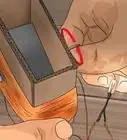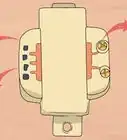This article was co-authored by wikiHow Staff. Our trained team of editors and researchers validate articles for accuracy and comprehensiveness. wikiHow's Content Management Team carefully monitors the work from our editorial staff to ensure that each article is backed by trusted research and meets our high quality standards.
There are 21 references cited in this article, which can be found at the bottom of the page.
This article has been viewed 67,080 times.
Learn more...
If you recharged your vehicle's air conditioning system with freon and it still isn’t working, or if you have a newly installed AC compressor, you may need to put oil in it. Take your vehicle to a certified mechanic if you don't have a reclaimer machine, which you need to capture the freon from the AC system. If you have some mechanical knowledge and a reclaimer machine, capture the freon before you remove the AC compressor to release pressure and prevent the refrigerant from escaping into the atmosphere, which is both harmful to the environment and illegal in many places. You can then remove the compressor, drain the oil, refill the compressor, and mount it back onto your vehicle so you can recharge the freon using the reclaimer machine.
Steps
Removing the AC Compressor
-
1Turn off the engine and open the hood to find your AC compressor. Open the hood and look on the left side near the front of the vehicle for your AC compressor. Look for a silver metal cylinder with belts, tubes, and wiring connected to it. Check behind the large hoses that may be obstructing your view of the compressor.[1]
- If you can’t find your AC compressor, check your owner’s manual or look up the make and model of your vehicle online to identify its location.
- Park the vehicle on level ground and make sure the parking brake is engaged.
- You could potentially shock yourself if the engine is active while you’re removing the compressor.
-
2Jack up your vehicle and remove the tire near the compressor. Use a vehicle jack and place it beneath a jack point on the vehicle’s frame, near the front tire. Remove the tire with a tire iron and set it aside to expose the AC compressor.[2]
- You should be able to see the protective covering of the compressor in the engine above the tire well.
Warning: Secure the jacked-up vehicle with wheel blocks and place jack stands beneath it before you work under the vehicle!
Advertisement -
3Take off the protective covering by removing the mounting bolts. Use a socket wrench to unscrew the mounting bolts on the protective covering over the AC compressor. Take the covering off of the vehicle and set it aside so you can reinstall it later.[3]
- Keep the bolts together in a plastic bag so you don’t lose any of them.
-
4Loosen the nut on the belt and slide the belt off of the compressor. On the compressor, you’ll see a belt and pulley system. Use a wrench to loosen the nut on the outside of the pulley so you can loosen the belt. Slide the belt off of the side of the pulley so you can easily replace it later.[4]
- Don’t remove the nut from the pulley. Loosen it just enough to loosen the belt.
-
5Disconnect the wire connector from the compressor. The compressor will have a plastic wire connected to it as a power supply. Grip the connection point where the wire is plugged into the compressor and pull it off to disconnect it.[5]
- Allow the wire to hang loosely from the vehicle so you can reconnect it later.
- You may need to press on a plastic tab at the connection point to separate the wire.
-
6Remove the pressure lines by unscrewing the bolts holding them. The high- and low-pressure lines are the 2 lines coming out of the back of the compressor. The larger line is the low-pressure line and the thin line is the high-pressure line. Remove the bolts that connect the pressure lines to your compressor and separate them from the valves on the compressor.[6]
- The pressure lines will remain sealed until you open them, but the freon must be captured in order to prevent it from being released when you remove the compressor.
-
7Connect a reclaimer machine to the valves on the compressor. A reclaimer machine is a device used to release the pressure in the compressor and capture the freon so it doesn’t escape into the atmosphere. Connect the 2 valves from the reclaimer machine to the high and low-pressure valves on the compressor by raising the tab on the machine’s valves, sliding them onto the pressure valves, then pushing them closed.[7]
- The high-pressure valve will be larger than the low-pressure valve.
- The pressure valves on the compressor are sealed until you open them with the valve of the reclaimer machine.
- You can find reclaimer machines at auto repair shops.
- Reclaimer machines can cost between $400-$1,000.
-
8Turn the valves to open them and turn on the machine to capture the freon. Turn the valves on the compressor, then open the valves on the reclaimer machine. Then, turn on the machine to capture the freon from the compressor. Allow the machine to run until the pressure gauges read that the compressor is empty. Turn off the machine, close the valves, and disconnect them from the compressor.[8]
- The freon will be stored in an internal tank on the reclaimer machine so you can refill your compressor later.
-
9Unscrew the 4 mounting bolts and pull out the compressor. With all of the lines, wires, and belts disconnected, use a wrench to unscrew the 4 mounting bolts that connect the compressor to the vehicle. Pull out the compressor from either the top of the engine or from beneath it, depending on your vehicle’s design.[9]
- Keep the bolts organized together so you don’t lose them and can easily replace them later.
Draining and Replacing the Oil
-
1Take the rear cap off of the AC compressor. Hold the compressor in your hand and find the black end cap on the rear of it. Unscrew the cap with your hand to remove it from the compressor.[10]
- You may need to use a wrench to loosen the cap so you can remove it by hand.
-
2Hold the compressor upside down to drain the old oil from it. Empty out all of the old oil from the compressor into a plastic container so you can dispose of it properly later. Make sure absolutely all of the oil is drained from the compressor.[11]
- Adding new oil to a compressor that still contains oil can cause an overflow, which may damage the compressor or cause it to malfunction when you reinstall it.
-
3Check the owner’s manual to find out what oil your compressor needs. Look through your owner’s manual to find out what type and how much oil your compressor needs. Make sure you purchase the oil specified by the manufacturers.[12]
- For example, your AC compressor may require R134a refrigerant oil rather than PAG 46 oil. Putting the wrong oil in your compressor will damage it.
- If you don’t have the owner’s manual, look up the make and model of your vehicle online to find information about your AC compressor.
Tip: Look for a sticker on your compressor or on the underside of your vehicle’s hood that lists what type of oil and how much to add to your compressor.[13]
-
4Add the right type and amount of oil and secure the rear cap. Hold the compressor so that the open end is facing upward. Insert a funnel that fits into the opening and slowly pour the recommended amount and type of oil. Then, screw the rear cap on tightly and use a wrench to tighten it further so it’s secure.[14]
- Pour the oil slowly to reduce the chances of spilling it.
- Don’t add any extra oil, even if the compressor doesn’t seem full.
-
5Cycle the compressor by spinning the clutch plate 3-4 times. The clutch plate is the black disk on the compressor that rotates the shaft inside of it, which will suck in the oil to circulate it throughout the compressor. Hold the compressor in 1 hand and rotate the clutch plate several times to work the oil inside of internal workings of the compressor.[15]
Installing the AC Compressor
-
1Mount the compressor with the 4 bolts you removed. Replace the compressor back to it’s original mounting location. Install the 4 mounting bolts with a wrench and tighten them well so the compressor is secure and doesn’t move.[16]
- Wiggle the compressor with your hands to make sure there isn’t any movement.
-
2Connect the reclaimer machine valves to the compressor. Pull back the tab on the top of the valve of the reclaimer machine. Slide the valves from the reclaimer machine over the pressure line valves on the compressor and press down the tab to connect them.[17]
- The valves on the compressor will remain sealed until the reclaimer machine’s valves open them.
-
3Open the valves and turn on the machine to restore the freon. With the reclaimer machine connected, open the valves on the compressor, then open the valves on the machine. Set the machine to the restore setting and then turn it on. When the tank is empty, turn off the machine, close the valves, and disconnect them from the compressor.[18]
- The freon stored in the tank will be transferred to the compressor to charge it.
-
4Reconnect the 2 pressure lines to the compressor and replace the bolts. Slide the high and low pressure lines back into the compressor. Use a wrench that fits over the bolts to replace them over the lines and tighten them so they’re held securely in place.[19]
- Gently tug on the pressure lines to make sure they’re connected.
-
5Plug in the wire connector to the compressor. Line up the 2 sides of the wire connector and push them together to reconnect them. Give the wires a gentle tug to make sure they’re connected and won’t come undone.[20]
- You may hear a “click” or a “snap” when the wires are connected.
-
6Slide the compressor belt back onto the pulleys and tighten the nut. Put the loose belt back to its original position over the pulleys on the compressor. Then, take a wrench that fits over the nut on the pulley and tighten it until the belt is taut.[21]
- The belt shouldn’t be so tight that it stretches.
- Make sure the belt isn’t loose and wobbly or it may slide off while the vehicle is in motion.
-
7Replace the plastic covering and put the tire back on. Hold the plastic covering in place and slide the bolts into their slots. Use a wrench that fits the bolts to tighten them so the covering is secure and doesn’t shake. Slide the tire back onto the vehicle and use a tire iron to tighten all of the nuts.[22]
Tip: Replace the nuts in a star pattern and tighten them individually so the tire is even and secure. Tighten the nuts to the torque specs your owner's manual indicates to prevent safety hazards.
-
8Remove the jack and start the engine to test the compressor. Turn the handle of the jack to lower the vehicle back to the ground. Slide the jack from under the vehicle to remove it. Start the engine and check to see if the belt on the compressor is rotating to make sure the compressor is working.[23]
- If the air conditioning is able to blow cold air, then the compressor is functioning properly.
References
- ↑ https://youtu.be/ldNPhoIpN6c?t=13
- ↑ https://youtu.be/rK17sw3Vl_U?t=138
- ↑ https://youtu.be/rK17sw3Vl_U?t=147
- ↑ https://youtu.be/rK17sw3Vl_U?t=184
- ↑ https://youtu.be/rK17sw3Vl_U?t=202
- ↑ https://youtu.be/MlsRhkasdCQ?t=27
- ↑ https://youtu.be/uefv41v4N3c?t=188
- ↑ https://youtu.be/uefv41v4N3c?t=257
- ↑ https://youtu.be/rK17sw3Vl_U?t=255
- ↑ https://youtu.be/TANldmkL0sg?t=4
- ↑ https://youtu.be/TANldmkL0sg?t=13
- ↑ https://www.ericthecarguy.com/faq/solving-automotive-hvac-problems/part-1-cooling-system/adding-oil-to-the-ac-system
- ↑ https://youtu.be/rK17sw3Vl_U?t=298
- ↑ https://youtu.be/TANldmkL0sg?t=36
- ↑ https://youtu.be/TANldmkL0sg?t=47
- ↑ https://youtu.be/9ULcit40Ilc?t=129
- ↑ https://youtu.be/uefv41v4N3c?t=188
- ↑ https://youtu.be/IjLfyXCBw1k?t=349
- ↑ https://youtu.be/9ULcit40Ilc?t=131
- ↑ https://youtu.be/9ULcit40Ilc?t=140
- ↑ https://youtu.be/rK17sw3Vl_U?t=564
- ↑ https://youtu.be/rK17sw3Vl_U?t=147
- ↑ https://youtu.be/ldNPhoIpN6c?t=92
